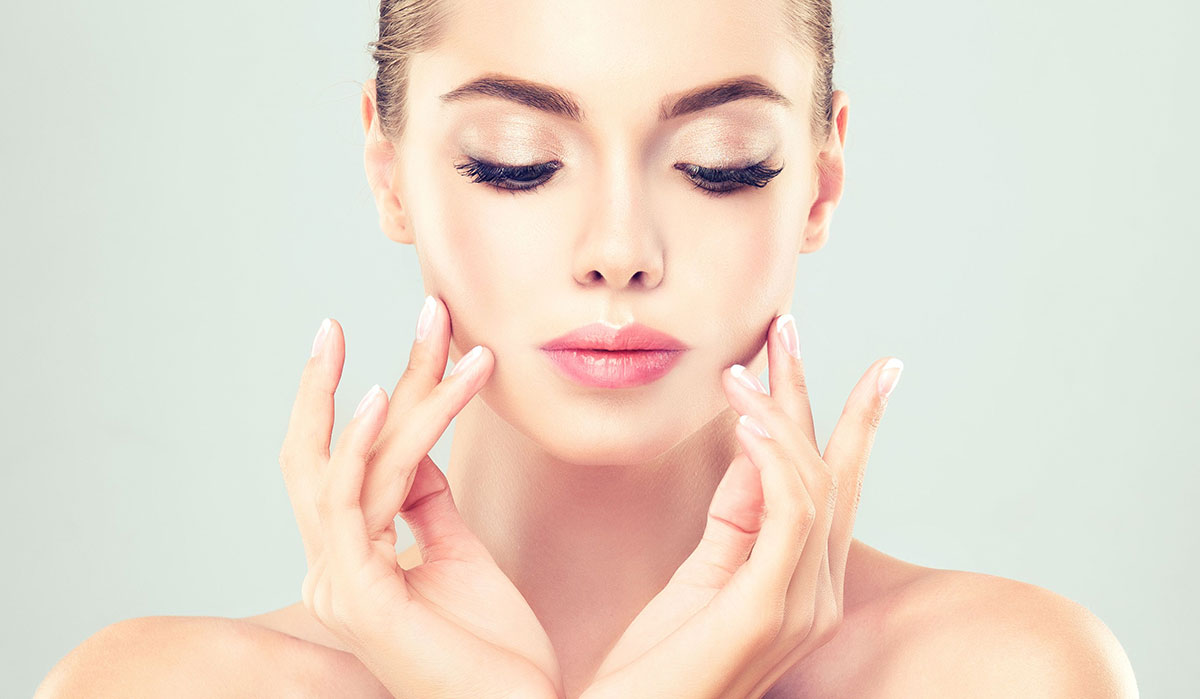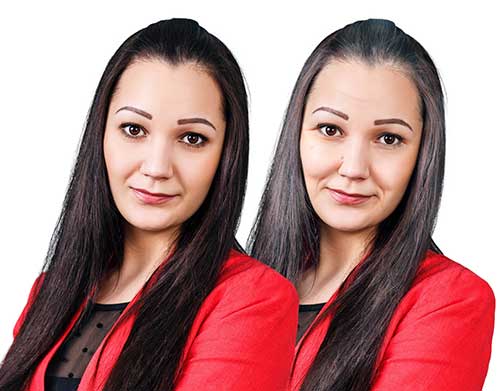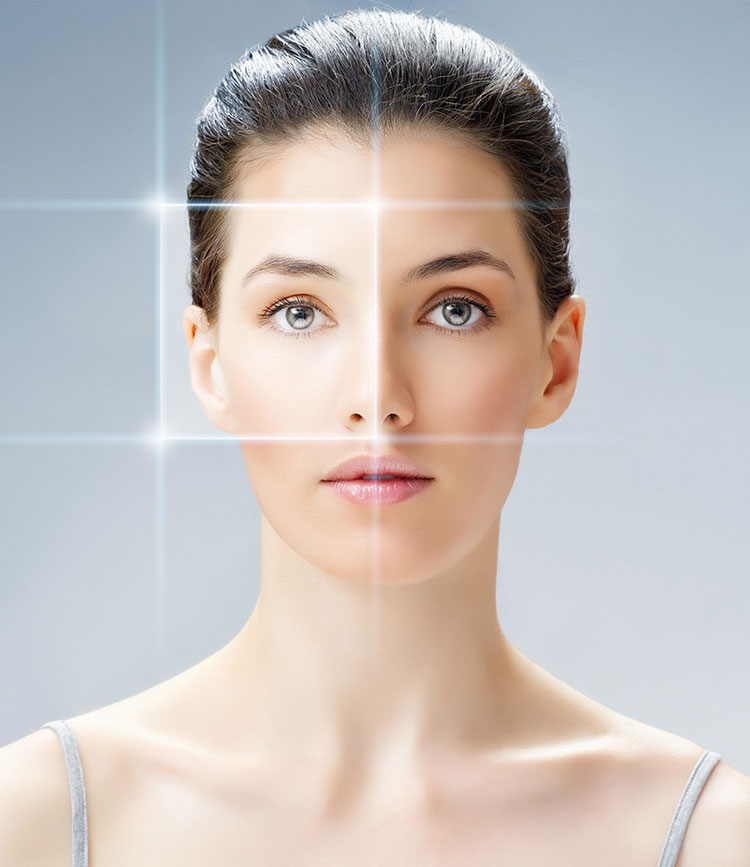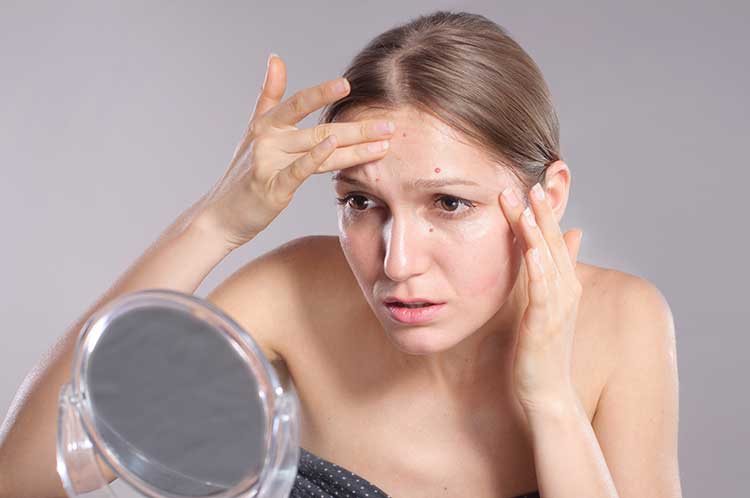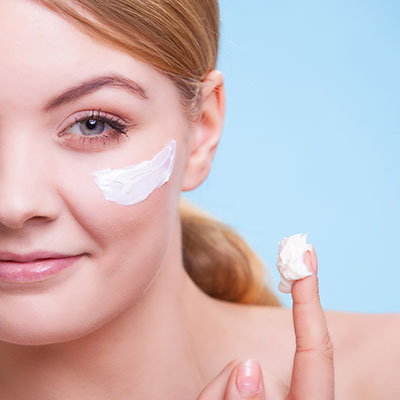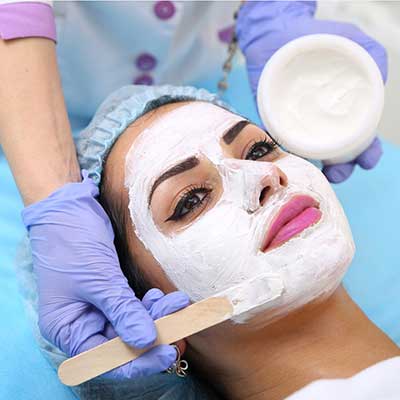Beauty, as an expression of one’s virtuous traits, may have a utopian feel to it, but in a looks-obsessed world, the concept of beauty is best understood on the premise of long established factors, one of which is skin. In the following interview, Dr. Ana Maria Anido Serrano*, a practicing dermatologist with more than 2 decades of experience in the field, expounds the physical essential elements of skin, its care and the transient notes of beauty pegged on to it.
Is beauty connected to skin care?
There is a canon of beauty in which the society, in general, considers it as desirable and attractive. Beauty could vary between different cultures and could also change with time. When a person is categorised as beautiful or is deemed to have beauty, it is based on what society or the individual considers beautiful.
It could encompass outer or inner beauty… While outer beauty is manifested in ones physical characteristics, including overall fitness, symmetry of features, youth and sensuality, inner beauty is ruled by essential psychological factors such as integrity, personality, intelligence, elegance, grace, charm and the soul, which is reflected in honesty, love and compassion.
All these factors are important and need to be taken into consideration when we talk about beauty. However, I believe that ‘beauty and skin care are connected’. At the time that we are born, our skin is very delicate, but during the growing process and through the adult life, our body and our skin gets exposed to sunlight, contamination, pollution, hormonal changes during adolescence, diseases and the physiological changes that take place as a part of the normal ageing process, ending in dry skin, pigmentation, wrinkles, etc. This is why it is very important to take care of our skin in order to improve our appearance and reflect healthy and beautiful skin.
Could the old adage ‘Beauty is only skin deep’ have a wider perspective?
As already mentioned, outer and inner beauty are closely related. In order to maintain or improve our beauty, we should take care of our bodies – both outer and inner. As we grow older, it is crucial and essential to take more care of our skin, as normal ageing process changes our body both inside and outside. Ageing is a dynamic process of spontaneous and gradual change resulting in a sequence of maturation through childhood, puberty and adulthood, followed by a declining stage through middle and old age.
On a general note, we can say that we have different types of ages: chronologic age based on the passage of time; biological age based on changes in the body that commonly occurs as people age; and normal age defined as a common complex of diseases and impairments that characterise many of the elderly. And, looking at all these aspects, yes, we can say ‘Beauty is only skin deep’.
But when we consider the following two types of ageing – psychological age based on how people act and feel (the so-called ‘young at heart’, and successful ageing – then our ‘intrinsic’ (chronologic) and ‘extrinsic’ (environmental) ageing are proven to be closely related to our well-being and a need to maintain a youthful and energetic spirit with healthy diet and good lifestyle to assist us.
How would you describe healthy skin and flawless skin?
Healthy skin can is essentially described or defined as soft skin, with a good texture, an excellent tactile sensation, and absence of pigmentation, uniform colour and tonicity.
Flawless skin is defined as perfect skin, with velvety and soft appearance, good texture, uniform colour, no pigmentation, very minimal pores, not oily and flaky, good hydration and is endowed with a natural glow and firmness.
What is the role of diet in maintaining skin health? What are the foods (and ingredients) that are particularly bad for skin?
Many studies have proven that the skin improves with a good healthy diet. As we say, ‘you are what you eat.’ There are, however, certain types of foods that are strongly related to and are essential for healthy skin nails and hair. These include:
- Brazil Nuts, soya, broccoli and seafood, which are rich in Selenium with antioxidant action
- Spinach, lettuce, leafy cabbage are good in antioxidants like vitamin A, C and E
- Eggs are rich in vitamin A; they soften the skin when applied
- Lemon, orange, broccoli, strawberries, guava, capsicum, kiwi are rich in vitamin C and help improve the production of collagen
- Green tea, soya, oregano, grape seeds, fruits are rich in resveratrol and flavonoids, with good anti-inflammatories and antioxidant action
- Fish, like salmon, sardines, tuna are rich in Omega 3 and 6
- Chicken, tuna, sardines, nuts and spirulina are rich in Vitamin B, which is important for hair, skin and cellular function
- Avocados and olive oil rich in oleic acid (good moisturisers)
- Fresh fruits, red and orange vegetables, salmon and shrimps are rich in carotenoids (lycopene and carotenoids)
- Berries like red berries, cranberries, blueberries, raspberries, apples and grapes are rich in bioflavonoids
- Nuts are rich in linoleic acid
Bad habits and unhealthy foods that can cause damage to the skin and early aging are stress, alcohol, smoking, caffeine, fast and junk foods, soft drinks, diets rich in sugars and saturated fat, excessive exposure to sunlight, constipation and hormonal problems.
What are the different skin types and what are the requirements for each type as far as health and aging is concerned?
The classification of the four skin biotypes is mainly based on the balance between the sebaceous and sweat secretion on the skin, as mentioned in the following:
Normal skin, also known as eudermic skin, has a perfect hydration. There is a balance between sweat and sebum secretion; it is characterised by a smooth and soft uniform colour, pores are mildly visible and the texture is fine.
Oily skin has a high production of sebum. It is best described as an oily shining skin, thick texture, dilated pores, tendency of forming comedones and late appearance of wrinkles.
Dry skin is essentially one where there is less production of sebum than the normal skin and is characterised by a very thin texture; it is not shiny, is rough, pores are less visible with mild flaking; it gets easily irritated, is sensitive to soaps and has a tendency to an early appearance of wrinkles.
Combination skin means mixed skin types – more commonly the oily and dry type.
There are other types of skin, such as sensitive and dehydrated skin. Sensitive skin easily reacts when exposed to heat, cold, poor nutrition, stress, smoking, air conditioning and pollution, while dehydrated skin is characterised by a reduction of water component, with a normal or increased production of sebum.
There is, however, a essential rule that applies to all skin types, and that is daily cleansing of the skin to eliminate dead cells, sweat, sebum, microorganisms and contaminants from the environment. It is very significant to take into consideration the right selection of products and application of moisturisers to different skin types.
- It is, generally, advisable to avoid products containing alcohol, organic solvents or detergents to avoid dehydrating the skin.
- In case of oily skin, the advice is to use products that regulate the amount of sebum without dehydrating the skin – products with a light fluid, thin lotions and liquid or gel texture. For sensitive skin, reduce the use of soaps, in case you cannot avoidance using it, choose a mild soap without preservatives or perfumes.
- For a combination skin, you need to use combined products for oily and dry skin.
- For dry skin, use cream, rich lotions or products with a velvety texture
It is recommended to use sunblock, follow a well-balanced diet, with appropriate intake of water and maintain a healthy lifestyle and regular exercise. In using of cosmetics, it is recommended to opt for those combined with moisturisers, and which correlate with your age.
What are the damages wrought by the sun on the skin and what is needed to minimise its effects? Could you explain the need for sunscreen in skin care?
The major effects on the skin are due to UV (ultraviolet) radiation, which is divided into 3 types – UVA (320-400nm), it is further subdivided as UVA1 (340-400nm) and UVA2 (320-340nm); UVB (290-320nm); and UVC (9270-290nm).
The effects of UV radiation are cumulative and irreversible. The short-term side effects are erythema, burns or pigmentation. Long-term side effects are early ageing and carcinogenesis or tendency to develop skin cancers.
Use of sunscreen is essential as it will help minimise side effects of UV radiation. Other measures could be use of umbrellas, hat, sunglasses, excessive sun exposure, mainly during peak radiation hours (11am-4pm), early use of photo-protection and use of sunblock in children (but not in children less than 6 months age due to possible toxicity when absorbed through the skin because they have a larger skin surface area) and limited exposure to sunlight in children below 3 years of age.
Sunscreen is an important component in skin care; it is recommended to use SPF 30 or greater, as its helps to keep the skin younger and healthy, reduce the development of skin cancer and slow the extrinsic or environmental ageing.
What are the dos and don’ts to follow for flawless skin?
Do
- Use sunscreen on daily basis (even indoors); re-apply every 2 hours
- Remember that you need basic or essential skin care items – cleanser, toner, moisturiser and nutritional products with a neutral PH – to have flawless skin
- Use topical products with antioxidants
- Use moisturisers
- Use scrubbing products with care and as per the skin type – people with oily skin may use 2-3 times a week, people with dry or sensitive skin could use once a week, while avoiding products that contain glycolic or salicylic acid, which are recommended in case of oily skin
- Drink plenty of water – 2 litres daily
- Practice exercise, as it increases the cardiac rhythm and improves the delivery of nutrients and oxygen to skin cells
- Avoid stress
Do Not
- Forget regular use of sunscreens
- Smoke
- Change your sleeping habits
- Take hot and long showers
- Over exfoliate your skin.
- Forget to remove make up before sleeping
- Forget the use of moisturisers
With regular visits to beauty salons becoming a norm rather than an exception, what are the long-term side effects of various cosmetic treatments/procedures?
Short and long time side effects of cosmetic procedures could be infections, bruises, granuloma formation, ulcers, necrosis, allergic reaction to anaesthesia, scar formation, nerve damage, patient dissatisfaction and psychological distress with the treatment results, pulmonary embolism and damage to sensible organs.
As the beauty industry keeps growing and cosmetic manufacturers continue to woo both women and metrosexual men, what are some of the measures one needs to follow while selecting products?
At any point in time, before choosing a cosmetic product, consider the following essential guidelines for your skin type and age:
- Avoid facial foaming gels, because it will cause more irritation to the skin due to the ingredients, try to use those that produce less foam.
- Use micellar water for dry and sensitive skin
- Use soft foaming products for oily skin
- Avoid using of abrasive scrubs
- Avoid the use of drying or harsh cleansers
- Avoid the use of cosmetics that contain menthol, peppermint, citrus oils, eucalyptus, citrus juices, lavender or witch hazel
- Avoid choosing very thick and heavy occlusive emollients, only in case of very dry skin
- Avoid cosmetics with fragrance and denatured alcohol
- When choosing make up, people with oily skin and Acne Vulgaris should use the non-comedogenic cosmetics and people with dry skin should use cosmetics with moisturisers, like hyaluronic acid or glycerine.

*Dr. Ana was born in Cuba where she finished her medical education. She has been living in Oman for the past 25 years and has obtained Omani nationality. She began her tenure as a dermatologist in Oman in the Dermatology Department at Sultan Qaboos Hospital in Salalah, followed by Al Nahdha Hospital, Muscat and, from 2008 till date, at Sultan Qaboos University Hospital. She also served as General Secretary of Oman Dermatology Society and is actively involved in various associations, society and board like Oman Medical Association, Skin of Color Society, and Oman Medical Specialty Board (OMSB).

